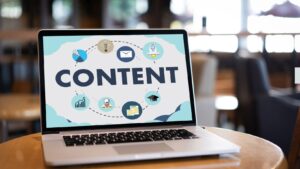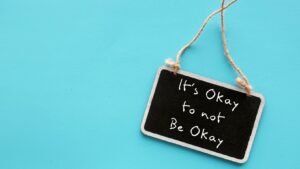Ever notice how your stomach drops when too many notifications hit at once? Or that brain fog after back-to-back video meetings? Or catching yourself checking your phone mid-conversation? These aren’t random frustrations. Digital burnout sneaks up quietly until one day, and your devices feel more like bosses than tools.
Unlike general exhaustion, digital burnout stems specifically from prolonged immersion in online environments. It manifests as a persistent mental fatigue that standard rest doesn’t fix. The constant context-switching, information overload, and artificial social dynamics create a unique strain on our cognitive systems that requires targeted recovery approaches.
Recognizing Digital Burnout’s Unique Footprint
Before implementing recovery strategies, understand what you’re dealing with. Digital burnout presents distinctly from other forms of mental exhaustion:
- Notification anxiety: Physical tension when hearing alert sounds, even from other people’s devices
- Screen aversion: Paradoxical avoidance of devices coupled with compulsive checking
- Digital amnesia: Difficulty recalling information consumed online despite hours of browsing
- Response fatigue: Delayed replies to messages due to decision paralysis rather than time constraints
- Interface disorientation: Feeling momentarily confused in physical spaces without search functions or back buttons
The most obvious red flag? When your online and offline selves blur completely—those days when not posting or responding makes you feel weirdly invisible.
Red Flag: Grabbing your phone during big emotional moments (happy or sad) to share or distract yourself means your tech has hijacked your natural response system. Time for a reset.
Immediate Recovery Tactics
When digital burnout reaches critical levels, implement these targeted interventions:
1. Conduct a Digital Energy Audit
Rather than a generic “digital detox,” map your technology use according to energy impact. Create a simple table with three columns: digital activities, energy effect (+/-), and essential status (yes/no).
Track every digital interaction for three days, noting whether each activity energizes or depletes you. This nuanced approach reveals that not all screen time is equal—a video call with old friends might be restorative, while scrolling work emails might be depleting.
2. Introduce Alternative Sensory Experiences
Digital environments prioritize visual and auditory stimulation while neglecting other senses. Deliberately engage your neglected senses to rebalance your sensory diet.
For those seeking deeper relaxation during recovery, natural delta 9 syrups with versatile uses offer an additional approach. These products can be incorporated into evening wind-down routines through various consumption methods—from adding a measured amount to herbal tea to using it in cooking recipes. The precisely measured servings (typically 5mg per teaspoon) allow for controlled experiences, though effects vary between individuals and should be approached mindfully.
3. Implement Physical Boundaries
The absence of physical separation between work and personal digital spaces contributes significantly to burnout. Create concrete boundaries through environmental design:
- Designate specific furniture for different digital activities (never work from your relaxation chair)
- Use separate browsers for work and personal browsing with different visual themes
- Create physical transition rituals between digital contexts (walk around the block before switching roles)

Most importantly, establish completely device-free zones in your home—ideally your bedroom and dining area—where screens never enter under any circumstances.
4. Restore Circadian Synchronization
Screen-emitted blue light and 24/7 connectivity disrupt your body’s natural rhythms, exacerbating burnout. Recalibrate your internal clock by:
- Exposing yourself to morning sunlight within 30 minutes of waking
- Implementing a strict “digital sunset” 2 hours before bedtime
- Using red-spectrum lighting in the evenings to signal your brain to produce melatonin
The most effective approach combines light management with timing adjustments—gradually shifting all digital activities earlier in the day when possible.
Timing Tip: Schedule demanding video calls for mid-morning when your cortisol levels naturally support alertness, reserving afternoons for asynchronous communication that allows processing time.
Sustainable Recovery Framework
Beyond immediate interventions, create lasting resilience through systematic changes:
5. Cultivate Analog Skills
Digital dependence intensifies when we lose confidence in our offline capabilities. Deliberately develop (or rediscover) non-digital skills that provide similar benefits to your most-used applications:
- Practice mental math instead of immediately reaching for a calculator
- Learn paper map navigation instead of relying exclusively on GPS
- Develop memory techniques instead of outsourcing all remembering to digital notes
Start with just one analog skill and practice it consistently until it feels natural again. This rebuilds cognitive pathways that may have atrophied through digital dependence.
Skill Boost: Choose analog skills with physical components over purely mental ones. Combining cognitive engagement with bodily movement creates more robust neural pathways that strengthen faster.
6. Redesign Notification Architecture
Most digital burnout stems from attention fragmentation rather than total screen time. Take control of your attention landscape:
- Replace notification defaults with manually created rules based on relationship contexts
- Create time-bound “communication windows” for different platforms
- Design asymmetric notification settings (e.g., texts from family bypass Do Not Disturb, but work emails don’t)

The key insight is that your attention is your most valuable resource—treat it with the same protection you’d give your financial assets.
Notification Reset: Once monthly, turn off ALL notifications for 48 hours. After this reset, only reactivate alerts that you actively missed rather than automatically restoring previous settings.
7. Develop Technology Use Principles
Rather than rigid rules that eventually fail, establish personal principles that guide your technology decisions. Example principles might include:
- “I use technology as a tool for connection, not a substitute for it”
- “I prioritize creation over consumption in my digital life”
- “I evaluate new digital tools by how they enhance my offline experience”
Implementation Boost: Share your principles with three trusted people who interact with you digitally. Ask them to gently point out when your online behavior drifts from these stated values.
Professional Support Considerations
When self-help strategies prove insufficient, consider structured assistance:
- Digital wellbeing coaches: Specialists trained specifically in technology-life balance (rather than general life coaching)
- Try talk therapy with a CBT focus. It helps rewire thought patterns and build better habits.
- Look into mindfulness programs that specifically target attention training and help you stay present.
The Bottom Line
Getting over digital burnout doesn’t mean you should throw your laptop out the window. It’s about taking back control of your relationship with tech.
This isn’t a one-weekend detox—it’s more like building a healthier diet. You’ll need to address both the immediate symptoms (the exhaustion and anxiety) and the deeper patterns that got you here. What matters is being aware of how screens affect your real life and adjusting when things get out of balance.

























































